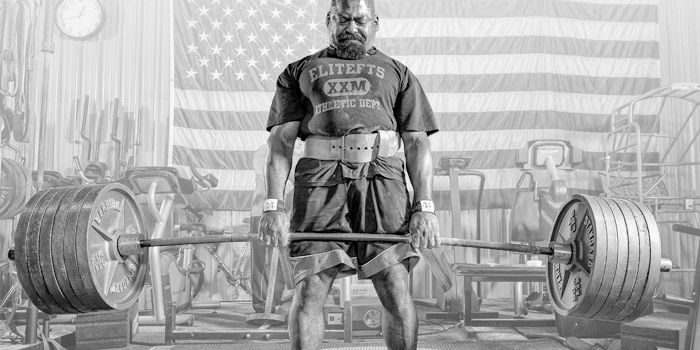
The deadlift as a power movement is unapologetically unique, different, stubborn, and unyielding in its simple defiance. If it were a person, we would describe it as completely and totally obstinate as it sits there, stationary on the ground practically mocking the lifter. Personally, these are the aspects I love about this lift. The deadlift is the standout of the three powerlifting movements. It is unique compared to the other two main lifts for a few of critical reasons, four of those reasons being the following:
- As the movement begins, the loaded bar is stationary on the ground, motionless and void of energy. This is unlike the other two lifts where the lifter has the bar on their person, locked and rested into place as the movement begins.
- Deadlifters use a mixed grip, which you would not find with the bench or the squat.
- For the geared lifter, there is not the massive potential increase in weight lifted you find with the squat and bench press when juxtaposing an equipped lift with a raw lift.
- The grip requirement aspect of the lift itself is unique. People don’t bomb out in a meet because they couldn’t maintain their grip in the squat or bench press.
Let’s expand on these four reasons.
It begins stationary.
With regard to the first point, the squat begins with the lifter in a locked out position. If their setup is correct, the lifter can get himself or herself into perfect position "under the bar" for the movement, and from the first downward motion the lifter is building up kinetic energy as they near that point of reversing directions from a controlled downward movement into an explosive upward one. The same goes for the bench: the bar is allowed to be handed to the lifter perfectly as they hold that bar perfectly in place (assuming their setup is correct). As is the case for the squat, from the first downward motion the lifter is building up kinetic energy as they near that point of reversing directions from a controlled downward movement into an explosive upward one.
RECENT: 5 Things You Must Know as a Novice Powerlifter
This is especially true for the equipped lifter, as the energy is building during these two lifts. With the deadlift, this is simply not the case. Think about it this way: if you can press 400 pounds raw, picture that in your mind’s eye. Your training partner lifts off to you, you hold the bar for a moment as the weights settle, you bring the bar down to your chest in a controlled fashion, legs tight, shoulders in tight, then when the bar touches your chest you transfer that building energy and drive that bar up, in essence, with your entire body force. So, with that in your mind, let’s go through that same mental exercise in a different way. 400 pounds is loaded on the bar, but this time you are laying on the bench and two side spotters hand that 400 pounds bar all the way down to your chest. The bar is sitting there on your chest, motionless. The maximum amount of weight you can press is just sheer weight lying there. Now, imagine yourself trying to tighten up and then having to press that weight from a dead start.
Once you go through a mental exercise like this you start to see the energy that the downward motion serves you when it comes time to shift direction and press that bar up. A max effort deadlift has none of that energy built up — in fact, there is none until you get to reps off the floor, but we will cover that in a bit.
Lifters use a mixed grip.
With regard to the second point, most lifters have a mixed grip, which you would not find with the bench or the squat. There are benchers who have unique grips. Those who have been around the block for a good while remember the late great Anthony Clark. Anthony was a super heavyweight powerlifter with an 1,100-pound single-ply squat, 771-pound deadlift, and an 805-pound shirted bench press. 805 pounds in the bench is a great bench today, but in 1997 when Anthony pressed 805 pounds, the shirts were nothing like they are now. What made his bench so unique was that he used a reverse grip — reverse grip meaning palms facing inward when he benched, like you would grip a barbell for performing barbell curls, palms in. That said, the unique bench reverse grip is still a grip where the hands are both facing the same direction, and when squatting the hands also face the same direction.
Only with the deadlift (hook grip aside) do we have a pronated hand and a supinated hand. The mixed grip causes issues down the road that newer lifters would not yet be aware of, as their weights are not heavy enough to see these future issues. The deadlift’s unique mixed grip causes the exposure of the supinated hand’s biceps tendon, which over time and with enough weight puts that biceps tendon against massive, massive stress and strain to hold together. While supinated, the weight that the entire back and legs have leveraged off the ground is also on that exposed biceps tendon. You can see hints of tendon ruptures to come when the deadlifter starts to windmill a little bit when they pull. Their trunk twists sideways just a few inches or you start to see the shoulder, at lockout, of the supinated hand start to dip an inch or so below the shoulder of the hand with the pronated grip. The other two lifts don’t have this additional obstacle and weak point built into them. In this aspect, like with the first point, the deadlift stands alone.
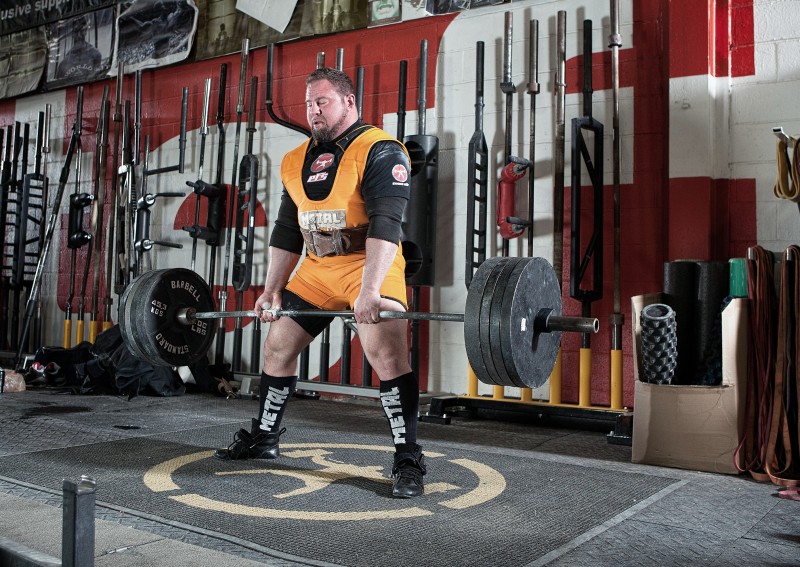
Gear carryover is less.
With regard to the third point, the deadlift has more uniqueness for the geared lifter. Bottom line: without the aspect of the build up of kinetic energy, there is simply not the massive transfer in weight lifted you find with the squat and bench press. Geared meets in the 1990s, much like raw meets today, often came down to the deadlift. With gear being what it is, an average deadlifter who is a strong bencher can more than make up the weight needed to compensate for a subpar pull with a huge increase in weight they gain with a shirted press. This has changed the dynamics of the game’s strategy quite a bit in favor of the benchers who can also squat, versus the pullers who can also squat. Put another way, some benchers can press up to and more than 200 pounds from a bench shirt, and that is simply not going to happen in the deadlift. This is why some of the biggest pulls in the history of the sport are still raw deadlifts, where as many of the all-time best raw benches from a couple decades ago are within pounds of the current raw all-time records, but shirted all-time records are literally hundreds of pounds over what they were fewer than 20 years ago. This is just a fact, and elite deadlifters need to plan for it in their training.
A strong grip is required.
With regard to the fourth point, unlike the bench press and squat, ultra heavy deadlifts require an exceptionally powerful grip, because having the power to pull 700 to 800 pounds off the floor is useless if at the meet you can’t hold that much weight in your hands long enough for the lockout call. Do you need a good grip for benching and squatting? Absolutely. But squatters don’t bomb and benchers don’t bomb because they lose their grip; that alone is a challenge for heavy deadlifts.
3 Critical Deadlift Lessons Most Lifters Never Learn
So, all that said, with regard to the three critical deadlift lessons most will never apply, this brings us to lesson number one. And let us preface this with saying that perhaps you are that lifter that will implement these lessons already. If that is the case, you are light-years ahead of the game. The vast majority simply will not implement these lessons, because they fall outside of the standard programs, technique talking points, and are flat out challenging to consistently implement.
1. Hook Grip
This directly relates to points two and four. Hook grip not only negates the issues with grip strength; it also protects the biceps tendon, stops the windmilling, squares up the shoulders with both hands in the same pronated direction, and to a degree lessons the distance to the floor. Here in lies the question, “If the hook grip is all that and a bag of chips, why wouldn’t every powerlifter use it?” That simple question deserves a simple answer: because the hook grip is pretty much horrific. Forget about how hardcore you think you are. The vast majority of powerlifters who try the hook grip can’t get through a single training session without throwing in the towel and going back to business as usual — and that is the business of exposing their biceps tendon, windmilling, being asymmetrical in the shoulders due to the mixed grip, and being slave to only pulling what they can keep in their grasp.
Some lifters will talk about small hands as a reason not to hook. That does make this difficult grip a little more challenging, but the good news is that all one needs to do is look at the tiny women’s Olympic lifters who hook grip to see that hand size is not an excluding factor. Others will talk about the aggressive knurling on a good deadlift bar. Look at a real powerlifter's hands. Those huge calluses will develop in time on the side of the thumb as well.
Most of the lifters I encounter fall into two categories with the hook grip. Category one is they are not doing the hook grip correctly — and the only thing that hurts more than a hook grip is an incorrectly applied hook grip. The second category is they just hook properly but the pain is excruciating, thus they don’t stick with it. I can tell you from experience that the first time you hook grip it hurts, but unfortunately the 100th time you hook grip it still hurts. You need to wait for calluses to develop and you need to understand that the hook is in large part about squeezing tighter than you ever have squeezed before. As counterintuitive as it sounds, the more you squeeze your thumb into the barbell, the less that barbell will crush your thumb once the weights come off the floor. I have put a great deal of information on how to hook grip in the article linked below for you to read. Like I said at the onset, this article is about critical deadlift lessons that 99% of the readers looking for a bigger pull will never apply, as effective lessons are not always easy nor convenient. But I am putting this out there because you might be that one percent. Here is the link to the hook grip information I am referring to. It is worth the read if you are serious about your deadlift.
2. Controlling the Descent
Loads of readers will not heed the hook grip advice because it is pretty brutal. This lesson will also not be heeded, but not because it is difficult. It will not be heeded because of ego. In the world of socia-look-at-me-dia, sounding strong often takes a front seat to actually being strong. If I had a dollar for every sub-par deadlifter I have seen throwing down the deadlift after they lock it out at the top, I would be the richest powerlifter in history. I can tell you, having come up in this great sport since my first meet in 1989, that this slamming and dropping the deadlift bar down on to the platform is a new thing in an old sport. I have been blessed and absolutely favored to have trained for decades alongside of the some of the best pullers in history and they would all place that bar down on the platform virtually in silence. They understood that the descent—a controlled downward motion—is a critical key to an explosive pull off the floor.
MORE: Building the Raw Deadlift
I can’t imagine a bencher only training half of the movement or a squatter squatting down, only to dump the weight off their shoulder in celebration prior to driving the weight back up. Yet this is what we see: serious lifters literally blowing off half of the movement. I suppose if you can’t be strong you need to sound strong, and thus hear the weight crash to the floor. But that is not really the sound of strength; it is the sound of half of the movement being wasted because the lifter was about show and not about go. I recall many a deadlift session at Frantz Gym (a legendary powerlifting gym that is no more), which was home to an inordinate number of 800-pound pullers. The work they put on the eccentric—the down portion of their deadlift alone—would make these modern day weight-slammers break in half.
So lesson two is to set the deadlift down, control that weight, keeping your head up on the way down as to keep your shoulders and chest from pitching forward. To this end, the nuts and bolts to this lesson I have also put together for you in a link here as well. So again, the 99%, will keep on slamming their way to a below average pull. But for you, the one percent, if you are not currently implementing this lesson, it will make a huge difference in your ability to pull more than you have ever pulled in your lifting career. I have decades of real-life data having trained with guys and gals who have silently placed the bar back down on the platform, rep after powerful rep, backing this up. Bottom line is that those with a huge deadlift place the bar down. Those who don’t, slam. Here is a full link of information on this for you. As stated earlier, it is worth the read if you are serious about your deadlift.
3. Step-Back Reps vs. Stationary Reps
When we squat and bench press, we take that moment at the top, re-stabilize, then take the next rep. As we have discussed, the deadlift is a different powerlifting animal than either of these lifts. There is no re-stabilizing needed, so we see reps that look like this: the weight is pulled up, the weight hits the platform, and with that little momentum from the platform the weight is yanked back up and the cycle repeats.
This issue we get into here is that when we re-stabilize on the squat and bench press, we are back in position for a single lift like at the meet. So in those two lifts (squat and bench press) a set of five reps is really a collection of five singles. With the deadlift, however, because there is no need to re-stabilize, the reps are just that: reps. A set of five deadlift reps is not a collection of five singles, but is not really five deadlift reps either. It is a single in-position deadlift followed by four reps where the body is no longer in single-lift posture, thus the deadlifter is using momentum and is also not pulling from the meet start position. Looking back at point three with regard to gear, this comes into play even more so, as you can be out of position and still pull back against the suit straps to get the bar up.
For building a big back, deadlift reps without a reset are outstanding, but for building a big deadlift, doing step-back reps are a must. Like with the hook grip question, you may ask, “If step-back reps are the best, why isn’t everyone doing them?” From my experience over the decades, I can tell you that lifters can’t see the bigger picture of taking that step backward in pounds and weight as an investment in lifting bigger weights in their future. A lifter who is used to training with the traditional rapid-fire reps with 500 pounds for five reps now suddenly has a good deal of trouble with their familiar 500 pounds loaded on the bar as they try their step-back reps. What they find is with each of the five reps having a step-back and re-approach to the bar, they have eliminated momentum and now they can only get three reps with 500 pounds, so they need to lower that training weight.
They have a disconnect with the fact that step-back reps are far more difficult, as the momentum—which will not be there when you compete—is gone. They are caught up in the training weight for reps, not the greater amount of weight they will be able to lift for a single attempt at the meet. This is a little like those beginner benchers who bounce the weight off of their chest each rep. Step-back reps are more difficult, so even the lesser weight still feels heavy, which again is why the 99% who do the traditional reps will not heed this lesson. But the one percent who does will take that reduction in weight, put their ego in the dresser drawer where it belongs, and come meet day they will see the fruits of their weight room labor. As with the prior two lessons, I am including a more extensive train of thought on this aspect for you to dig into as well. Here is that link.
As we stated at the onset, the deadlift as a power movement is unapologetically different, unique, stubborn, and unyielding in its simple defiance. If it were a person, we would describe it as completely and totally obstinate as it sits there, stationary on the ground practically mocking the lifter. Because of this uniqueness to the deadlift, these three critical deadlift lessons I am sharing with you are not simple ones, as if they were, most powerlifters would already be implementing them. These three challenge us in many ways, not least of which is the challenge to our ego.
- The hook grip makes you feel like a newbie lifter, as it truly will humble you with even as little as 315 pounds on the bar.
- Controlling the descent means you will have to impress with the work ethic of the lighter weight, not with theatrics, and that can be tough for powerlifters whose egos are fragile.
- Step-back reps initially means having to use less weight to get in the same amount of reps. That requires us to step back from our ego and use our ability to see long-term and perspective as less weight can incorrectly make you feel like you are losing ground.
The game of powerlifting is and always will be a choice of two pains: the pain of discipline or the pain of regret. My two cents is to choose the pain of discipline with regard to these three lessons. Apply them now and endure—even welcome—with open arms the pain of discipline. I maintain that this pain will pale in comparison to the pain of regret from looking back two years from now at a deadlift that has not moved forward, or worse, has gotten weaker. You can never get those two years back, and in a body-violent sport such as powerlifting when a major injury is always just a rep away, each year of training is a precious and sacred thing. Embrace the challenge, welcome the discipline, engage in these three lessons, and reap the rewards.










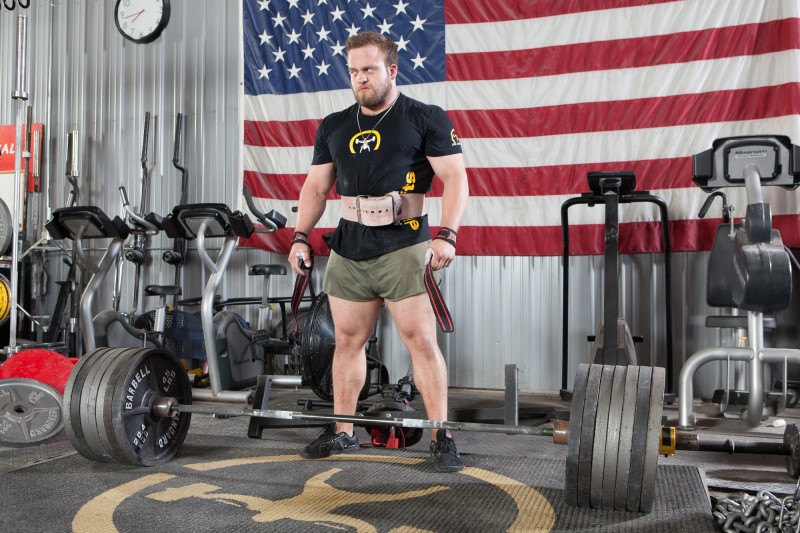
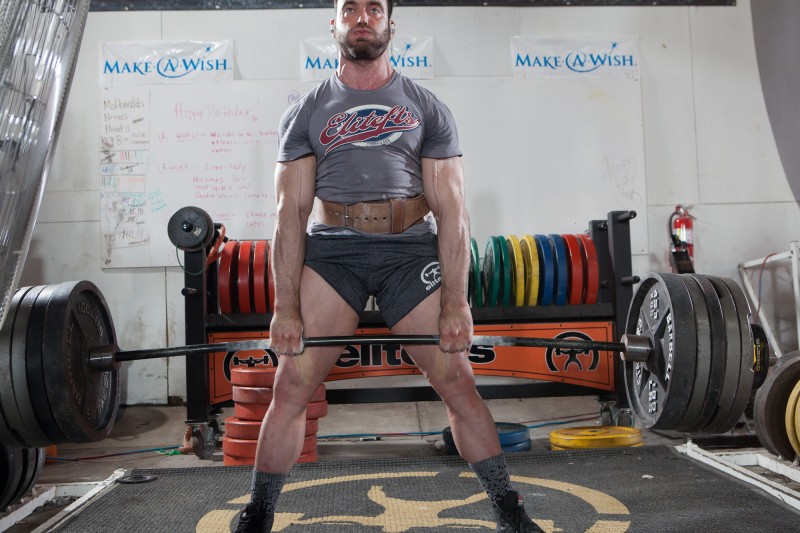
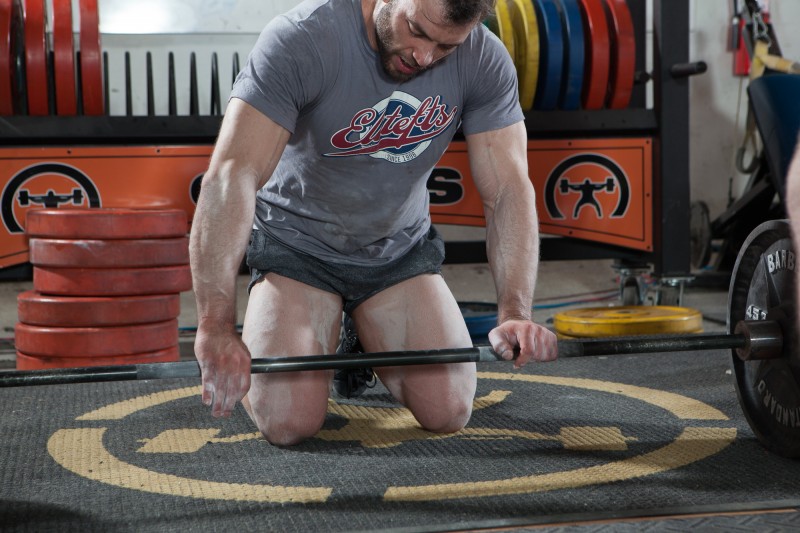
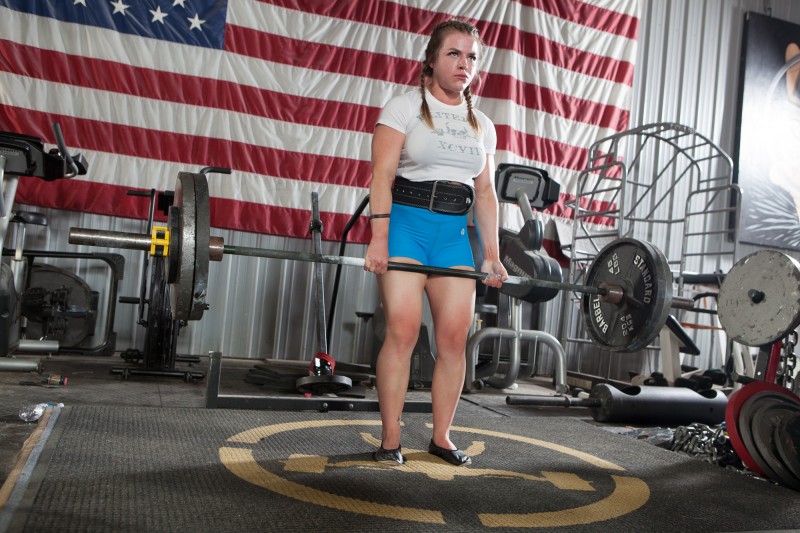
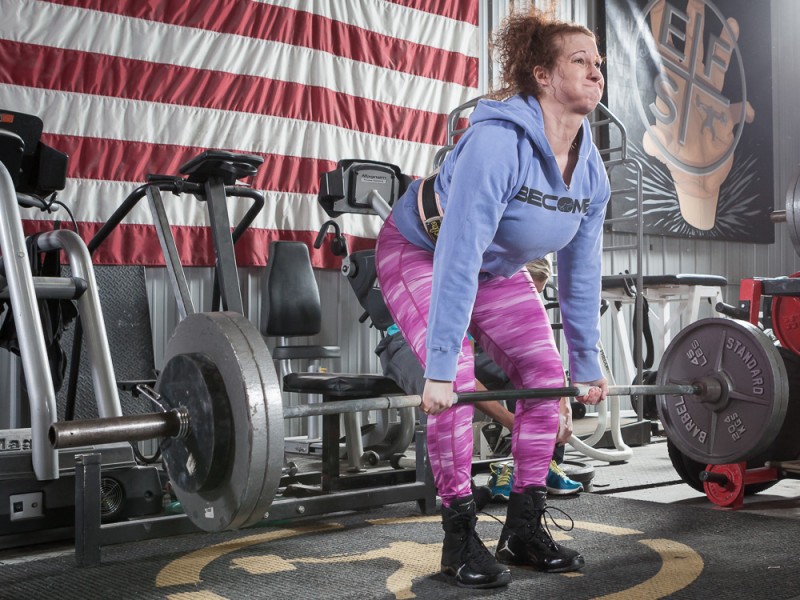
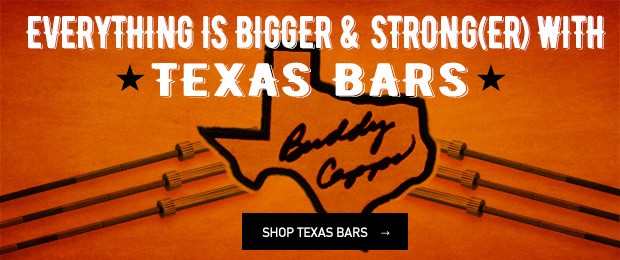
2 Comments